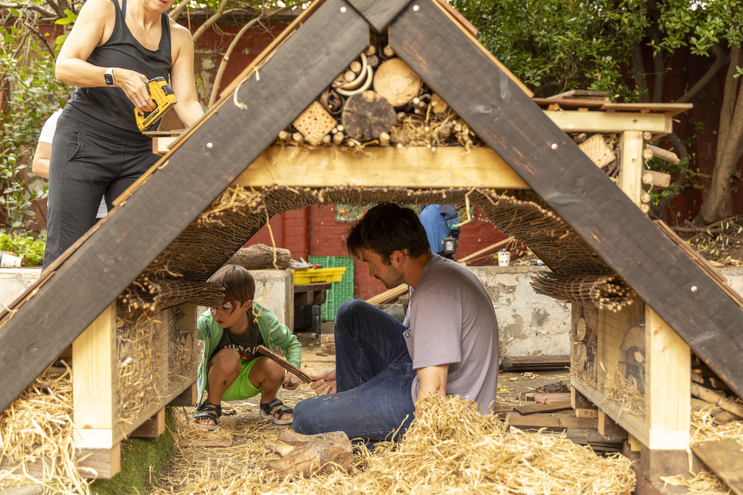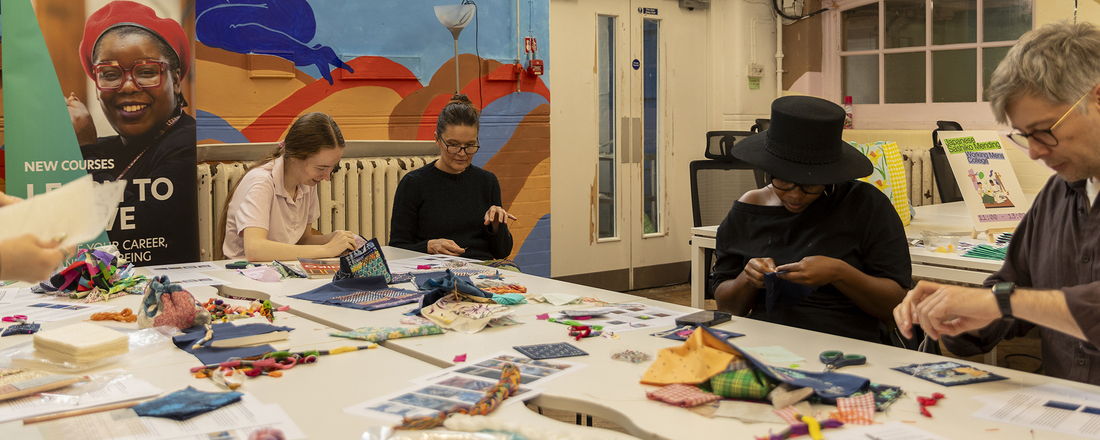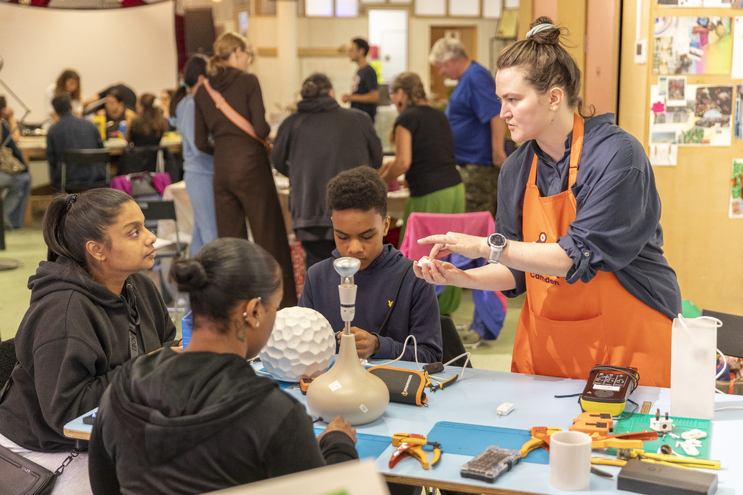Get updates from The Developer straight to your inbox Yes, please!
BIDs can find fresh purpose as leaders of climate conscious communities
At the Camden Inspire festival, people came together to make, repair and rethink their surroundings, with the BID acting as a convener rather than manager in an evolution of the BID model, writes Simon Pitkeathley

Chief Executive,
Camden Town Unlimited
What does it take to bring communities together around the climate emergency? Our Camden Inspire festival represented an opportunity to show that shared space and an open invitation to participate can help us to reimagine what a Business Improvement District (BID) can be.
For our BIDs, Inspire went beyond a public event. It was a testbed where business networks are leveraged not simply for growth but for social and environmental benefit. This evolution of the BID model marks a subtle but important shift from managing high streets to curating neighbourhoods. By bringing together businesses, residents and grassroots organisations around shared climate goals, we showed how cross-sector partnerships can build both community value and urban resilience.
Part of the London Design Festival, the event transformed two meanwhile-use buildings on Buck Street (home to Camden Collective) into a day-long gathering of circular design and collaboration. Organised by Camden Town Unlimited and Euston Town BIDs, the festival offered a mix of making, discussion and performance under three headings: Make, Do and Discuss. Behind these simple headings lay a complex ambition to position the BIDs not just as business advocates but as conveners of climate-conscious communities.
By enabling partnerships between the public, private and community sectors, the programme imagined a future where climate adaptation is locally driven and culturally embedded
The structure of the programme made climate issues easy to understand. Panels on food waste, longevity and sustainable design sat alongside practical workshops that turned complex ideas into hands-on experiences. It was really important to us that visitors didn’t just learn about circularity, they took part themselves. By keeping sessions affordable or free, Inspire also widened access, turning specialist knowledge into a shared civic resource.
The event brought together a number of local organisations, artists and residents to explore reuse and zero waste. Workshops ranged from fashion upcycling, electrical repair and kintsugi, to storytelling and plant rescue. Partners such as The British Library, Roundhouse, Wayward Architecture and HvH Arts took part, while the UnBroken Exhibition showcased salvaged furniture transformed by designers including Pearson Lloyd, Francesco Feliziani and 2LG Studio. It offered a glimpse into how design can activate dialogue, agency and belonging.
At the heart of the festival was a physical hub, in the form of the Camden Collective, that embodies the principle of adaptive reuse. These coworking spaces occupy existing buildings; hosting start-ups, artists and community projects. Meanwhile use can be used to anchor local identity and it becomes clear that temporary spaces can generate lasting impact.

What makes Camden Inspire different is its hybrid model. It refuses to cater to one audience but instead blended them. This kind of cross-pollination may be key to what we call community climate resilience.
The event also connected to the wider Green Loop Neighbourhood Designers programme, which treats design as a public benefit rather than a professional toolkit. By enabling partnerships between the public, private and community sectors, the programme imagined a future where climate adaptation is locally driven and culturally embedded. The festival became an open forum for the people and ideas shaping Camden’s green transition.
There is a broader lesson here about ways to support city development. The most effective climate communication is participatory rather than taking a top-down approach. People came together to make, repair and rethink their surroundings, with the BIDs acting as conveners rather than managers, using the creative abilities already present in their neighbourhoods.
The role of the BID offers a model for how local leadership can support place-based resilience
This framework for collaboration shows how design events can evolve from celebration to the transformation of climate anxiety into creative energy, while also reconnecting the community through shared purpose. The role of the BID offers a model for how local leadership can support place-based resilience.
Cities will need exactly this kind of collaborative infrastructure going forward. Spaces like Camden Collective invite experimentation that listen and replace ‘raising awareness’ with action.
Building better places is centred around relationships between stakeholders as much as it is about architecture or planning. In a city often defined by change, this festival offered something rare: a sense that the future can be both sustainable and communal.
Simon Pitkeathley has been CEO of the multi-award-winning BID, Camden Town Unlimited, since 2007. As well as being CEO of Camden Collective, Euston Town, Camden Highline and Alternative Camden, he is also currently Co-Chair of Cross River Partnership and Chair of Camden Giving. Pitkeathley sits on the London Enterprise Action Partnership (LEAP) and is its Champion for Small Business. Pitkeathley was elevated to the House of Lords at in 2024.
If you love what we do, support us
Ask your organisation to become a member, buy tickets to our events or support us on Patreon
Sign up to our newsletter
Get updates from The Developer straight to your inbox
Thanks to our organisation members
© Festival of Place - Tweak Ltd., 124 City Road, London, EC1V 2NX. Tel: 020 3326 7238

